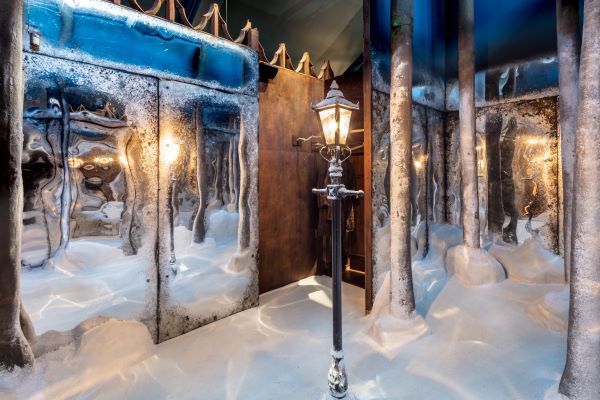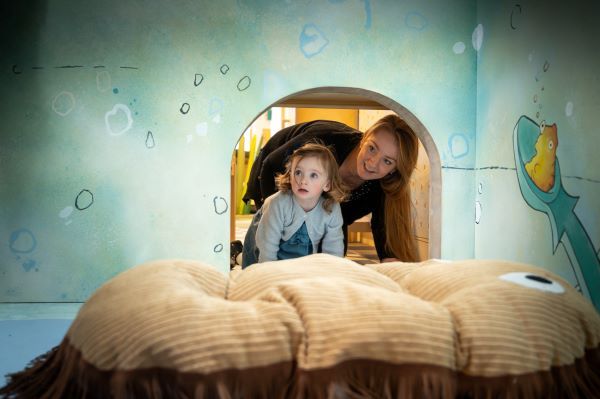It’s been a long, pricey road to the reopening of the Story Museum in Oxford, England. Following a £6 million renovation, the “fantasy factory” was due to reopen on April 4, 2020. The COVID-19 pandemic scuppered this, of course. The museum didn’t fully reopen its doors until October 24 – with many changes in place even beyond the intended revamp.
These changes attest to the resourcefulness with which some book lovers are responding to the pandemic. Caroline Jones, the museum director, notes that “compliant creativity” has been a challenge. A song to encourage handwashing epitomizes this. It’s a challenge that has inspired some useful innovations, which the museum might keep going even after (if) the world returns to normal. “One of our values is being seriously playful,” she says.
Here are some of the new practices the museum has put into place due to coronavirus:
Turn Dreary Rules Into Magic
The “Whispering Wood” is an interactive forest where each tree represents a different story from a different continent. Visitors start out with headphones (so far, so usual), but also simple tubes referred to as wands. Since various lights and sounds in the space are activated by touch, wands allow for physical interaction without grubby hands being involved.
Pre-pandemic, the plan was for visitors to whisper into leaf-shaped buttons to activate stories. Now, in an era where blowing candles on birthday cakes is finally being seen as the spit fiesta it always was, whispering seems like an invitation to spray droplets. So the wands are a clever way to stay hands-off while tapping into everyone’s inner witch. (The three children in my group were excited to touch even prosaic things like door buttons with their wands. That wasn’t a planned part of the experience, but hey, it’s all about the little things.)
Embrace Tech
While the intention was for the new iteration of the museum to be a low-tech, tactile place, that hasn’t been feasible in a pandemic era. So the reopened museum has more screens to watch, and fewer books to handle. The result is that it does feel more museum-like than library-ish.
Yet some of the physical interaction has been preserved in the “Enchanted Library,” the most dazzling part of the museum. This recreates scenes from children’s and YA books, so that stepping into each room feels like walking onto a set. Here plastic covers the furniture where visitors can sit. But this also means that kids can flop down onto the bed in the exuberantly designed Horrid Henry room, delighting in the fart noise that results from Henry’s whoopie cushion.
The need for reduced surface contact means that visitors don’t have the experience of pushing through heavy coats, as if in a wardrobe, to enter the Narnia room. Instead the coats are high up and to the side. But the wintry landscape is still a joy to tramp through. Digital elements create the sensation of a faun’s footsteps appearing around you.

Curate Visits Tailored to Age Groups
The coronavirus has impaired spontaneity. Museums have to plan visitor numbers more carefully to ensure social distancing, so the Story Museum has had to dispense with its unlimited entry annual passes. It’s also begun selling tickets by zone, for £5–8 each. This allows visitors’ movements to be directed more easily than if they bought tickets to the entire museum at once. Thus a family with a 3-year-old, for instance, is more likely to buy tickets specifically for the picture book-inspired “Small Worlds,” rather than the part of the museum that contains the Enchanted Library.
With a guide for each visitor bubble, and each small world demarcated by a white picket fence, the experience is now more curated than independent. This might be a metaphor for public life in the pandemic era. It’s also a story that continues to develop, as Oxford anxiously watches for possible changes to its lockdown status.

Source : How to Make a Children’s Book Museum COVID-Compliant










